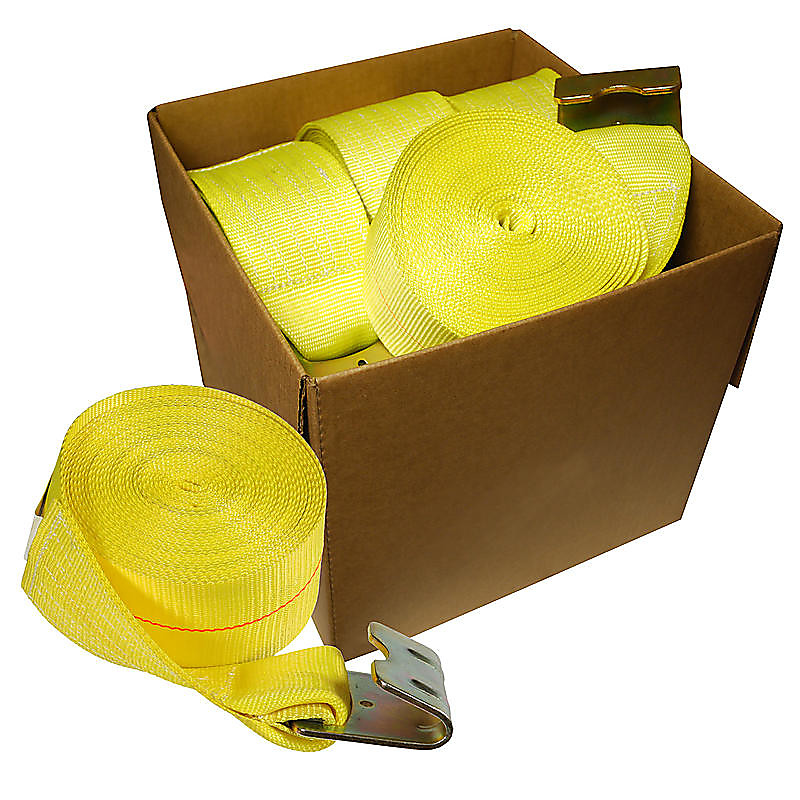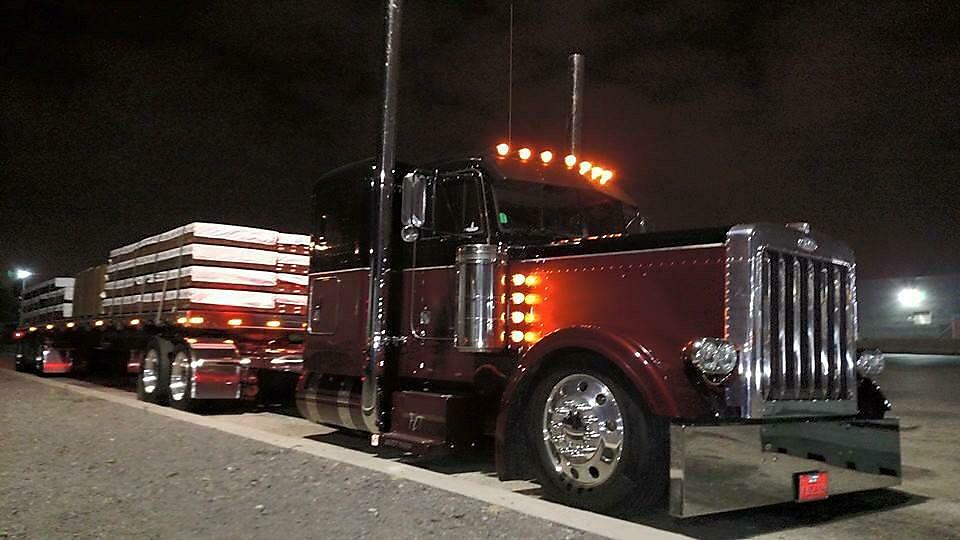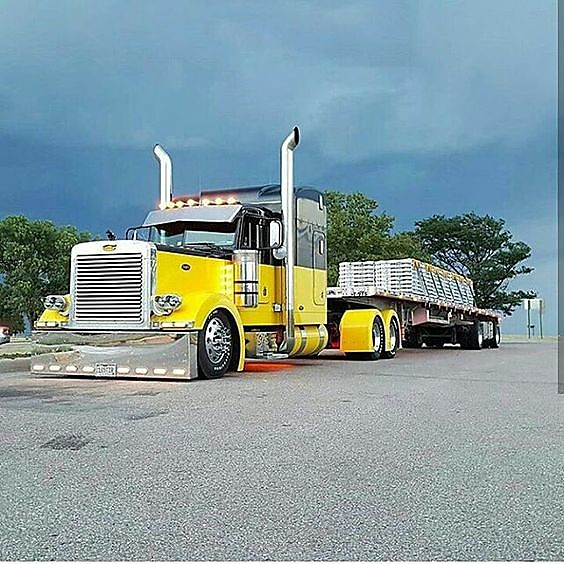
Tips on Becoming a Flatbed Truck Driver
Becoming a successful flatbed truck driver requires a unique set of skills and qualifications that are crucial for the safe and efficient transportation of various types of cargo across long distances. To pursue a career in this field, you must first obtain a valid Commercial Driver’s License (CDL) and maintain a clean driving record. A high school diploma or equivalent is also typically required by most employers.
Prior experience driving a flatbed truck and knowledge of securement techniques for different types of cargo may be additional requirements that employers seek. It’s important to note that physical fitness is also an important aspect of the job, as drivers must be able to perform tasks such as loading and unloading cargo.
In addition to technical skills, soft skills such as good communication and dependability are crucial for successful flatbed truck driving. Drivers must work closely with dispatchers and team members to ensure the timely delivery of cargo.
Being willing to travel long distances and being away from home for extended periods is also a requirement for flatbed truck drivers. Attention to detail is critical in this profession, as drivers must ensure that cargo is properly secured and handled to arrive safely at its destination.
Moreover, flatbed truck drivers must comply with regulations set by the Department of Transportation (DOT) regarding hours of service, cargo securement, and vehicle inspections. Knowledge of equipment maintenance, navigation skills, understanding of weight restrictions, and different types of cargo is essential for success in this field.
To sum up, the profession of a flatbed truck driver requires a combination of technical expertise, physical fitness, and personal attributes such as dependability and attention to detail. By fulfilling these requirements, you can start your journey toward a successful career in flatbed truck driving. Let’s begin.

The Requirements and Qualifications for Aspiring Flatbed Drivers
• Commercial Driver’s License (CDL): You must have a valid CDL, which requires passing a written and driving test.
• Clean driving record: Employers typically require a clean driving record, with no major violations or accidents.
• High School Diploma or Equivalent: A high school diploma or equivalent is usually required.
• Flatbed truck driving experience: Some employers may require prior experience driving a flatbed truck, including knowledge of securement techniques for hauling various types of cargo.
• Physical fitness: You must be physically fit and able to perform the tasks required of a truck driver, including loading and unloading cargo.
• Good communication skills: Effective communication with dispatchers, customers, and other team members is crucial in the trucking industry.
• Dependability and reliability: Trucking companies need reliable drivers who can meet deadlines and be trusted to safely transport valuable cargo.
• Willingness to travel: Flatbed truck drivers often travel long distances and may be away from home for extended periods.
• Attention to detail: Flatbed truck drivers must pay close attention to the securement and handling of cargo to ensure it arrives safely at its destination.
• Ability to follow regulations: Flatbed truck drivers must comply with regulations set by the Department of Transportation (DOT) regarding hours of service, cargo securement, and vehicle inspections.
• Knowledge of equipment maintenance: Drivers may be responsible for performing routine maintenance on their trucks and equipment, such as checking tire pressure and oil levels.
• Flexibility: Schedules can change quickly in the trucking industry, so drivers must be able to adapt to new routes or delivery times.
• Navigation skills: Flatbed drivers need to be proficient in reading maps and using GPS systems to plan their routes and navigate to new destinations.
• Understanding of weight restrictions: Flatbed drivers need to be aware of weight restrictions for the different states they may travel through and ensure they are not exceeding those limits.
• Knowledge of different cargo types: Drivers need to be familiar with different types of cargo and how to properly secure and transport them on a flatbed truck.

Challenges Faced by Flatbed Drivers While On The Road
As a flatbed driver, you can expect to face several challenges regularly. From cargo securement to weather conditions, these challenges can make your job more difficult and require a combination of technical expertise and personal attributes to overcome.
One of the primary challenges for flatbed drivers is cargo securement. Unlike traditional box trucks, flatbed trucks have an open bed that requires special attention to ensure that cargo is properly secured and does not shift during transit. This requires knowledge of securement techniques for different types of cargo and attention to detail during loading and unloading.

Weather conditions are another challenge that flatbed drivers must contend with regularly. While all drivers must be mindful of inclement weather, flatbed drivers are often exposed to harsher conditions due to the open nature of their trucks. From heavy rain to high winds, these conditions can make driving more difficult and hazardous.
The physical demands of flatbed driving can also be a challenge. Loading and unloading cargo can be physically demanding, requiring strength and endurance. Additionally, long hours on the road can be tiring and lead to fatigue, which can make driving more challenging.
Limited accessibility is another challenge that flatbed drivers may encounter. Some delivery locations may have limited accessibility, requiring drivers to navigate narrow or difficult-to-reach areas. This can be especially challenging for larger flatbed trucks, which may require additional maneuvering to reach their destination.
Regulations set by the Department of Transportation (DOT) can also be a challenge for flatbed drivers. Drivers must comply with regulations regarding hours of service, cargo securement, and vehicle inspections. Failure to comply with these regulations can result in fines or other penalties.
Finally, equipment maintenance is an ongoing challenge for flatbed drivers. Flatbed trucks require regular maintenance to ensure they are in proper working condition. This can be a challenge for drivers who are constantly on the road and may need to find a maintenance facility while away from home.
Despite these challenges, many flatbed drivers find the profession to be both rewarding and fulfilling. By facing these challenges head-on, flatbed drivers can ensure the safe and efficient transportation of cargo across long distances. To be a successful flatbed driver, it takes technical expertise, physical fitness, and personal attributes such as dependability and attention to detail.

Equipment Needed for Professional Flatbed Drivers and Operators
The equipment needed for flatbed trucking goes beyond the standard equipment found in traditional box trucks. In addition to the truck itself, flatbed drivers require a range of equipment to properly secure and transport cargo.
One of the most important pieces of equipment for flatbed drivers is the flatbed itself. This is the open platform on which cargo is loaded and transported. Flatbeds come in a variety of sizes and can be customized to meet specific hauling needs.
Cargo securement equipment is another essential piece of equipment for flatbed drivers. This includes straps, chains, and binders, which are used to secure cargo to the flatbed during transit. It is important to have the correct equipment for the type of cargo being transported, as different types of cargo may require different securement techniques.
Tarps and covers are also important pieces of equipment for flatbed drivers. These are used to protect cargo from the elements during transit. Tarps and covers come in a variety of sizes and can be customized to fit the specific dimensions of the cargo being transported.
Flatbed drivers also require a range of tools to properly secure and transport cargo. These may include winches, ratchets, and tensioning tools, which are used to tighten and secure straps and chains.
Finally, safety equipment is an essential part of flatbed equipment. This includes items such as safety cones, reflective tape, and reflective vests, which are used to ensure that the flatbed and cargo are visible to other drivers on the road.
Flatbed trucking requires a range of specialized equipment beyond the standard equipment found in traditional box trucks. From cargo securement equipment to safety equipment, flatbed drivers must have the proper equipment to safely and efficiently transport cargo over long distances.

Shop Our Popular Ratchet Straps

Frequently Asked Flatbed Questions
What is a flatbed truck? – A flatbed truck is a type of truck that has an open platform for hauling cargo. The cargo is loaded onto the flatbed and secured in place using straps, chains, and other securement equipment.
What kind of cargo can be hauled on a flatbed? – Flatbed trucks can haul a wide variety of cargo, including lumber, steel, construction equipment, machinery, and oversized loads. Flatbeds are particularly well-suited for transporting large or heavy items that cannot be transported in a traditional box truck.
What kind of license is required to drive a flatbed truck? – To drive a flatbed truck, you must have a valid Commercial Driver’s License (CDL) with the appropriate endorsements. The specific endorsements required depend on the type of cargo being hauled.
What are the biggest challenges of flatbed trucking? – Flatbed trucking presents several unique challenges, including securing cargo properly, dealing with inclement weather and road conditions, and operating oversized loads. Flatbed drivers must also be physically fit and able to perform tasks such as loading and unloading cargo.

How much does a flatbed truck driver make? – The salary for a flatbed truck driver varies depending on experience, location, and the company they work for. According to data from the Bureau of Labor Statistics, the median annual wage for heavy and tractor-trailer truck drivers, including flatbed drivers, was $48,320 as of May 2020.
What kind of equipment is needed for flatbed trucking? – Flatbed trucking requires specialized equipment beyond the standard equipment found in traditional box trucks. This includes cargo securement equipment, tarps, and covers, tools for securing cargo, and safety equipment such as reflective vests and safety cones.











